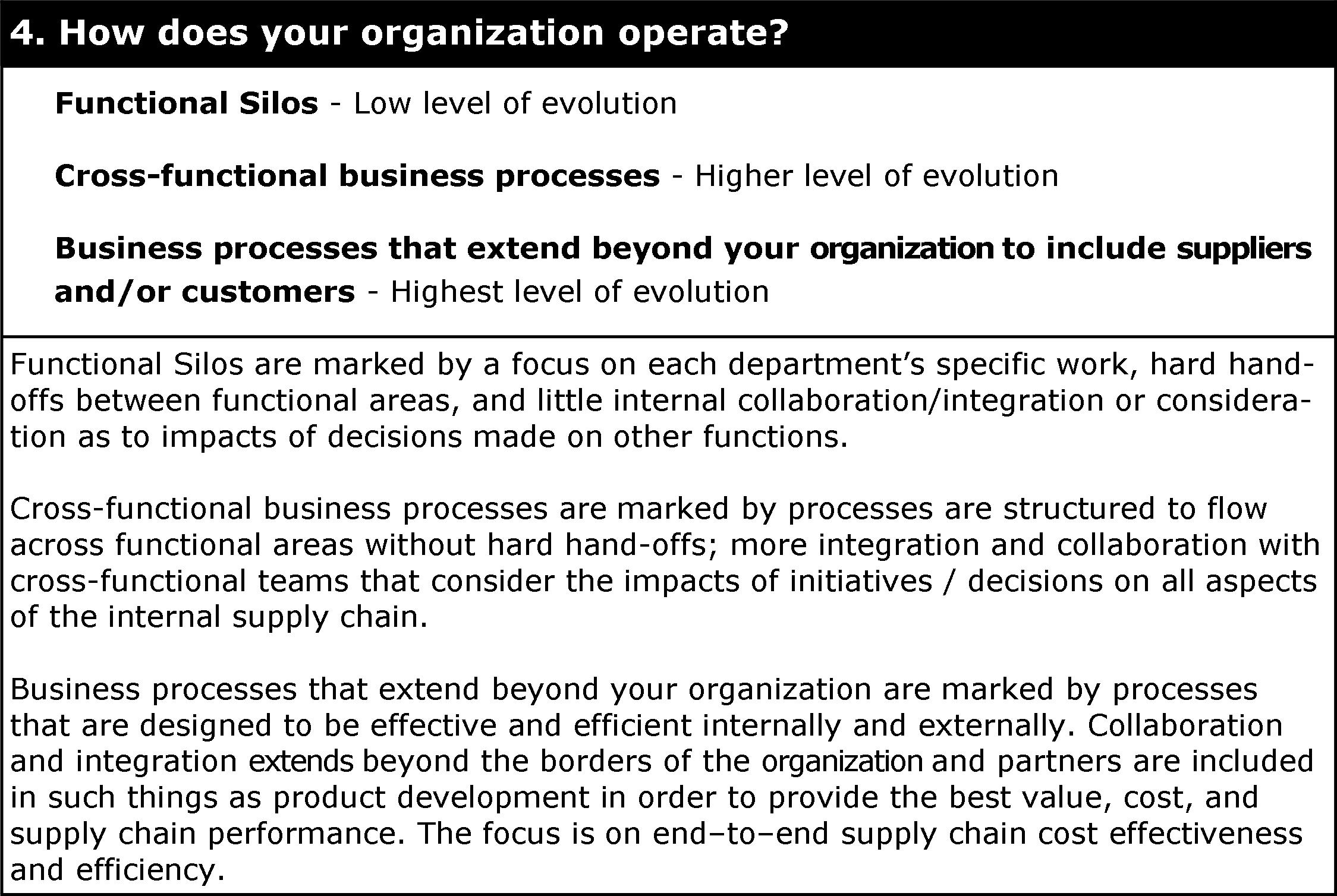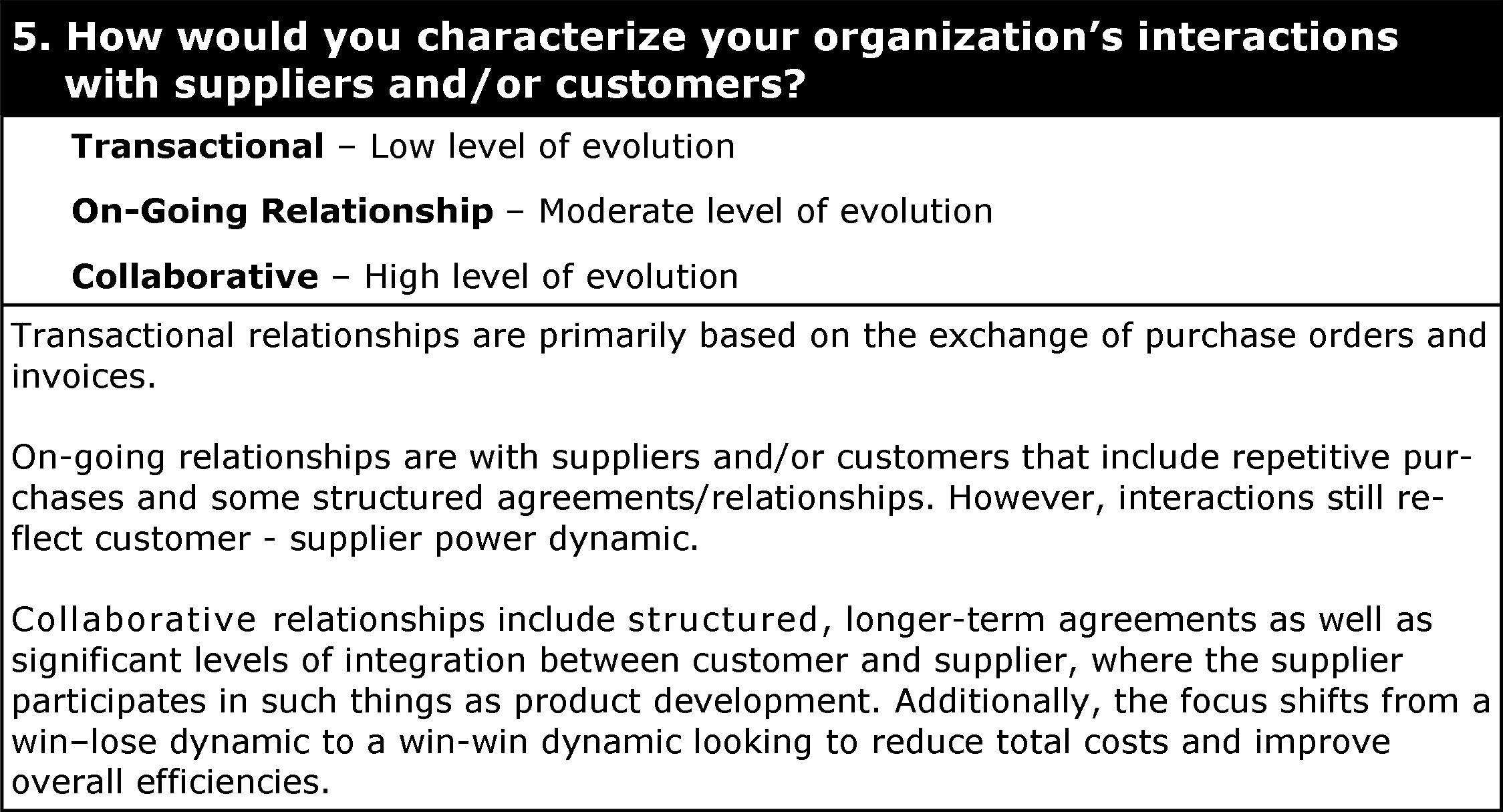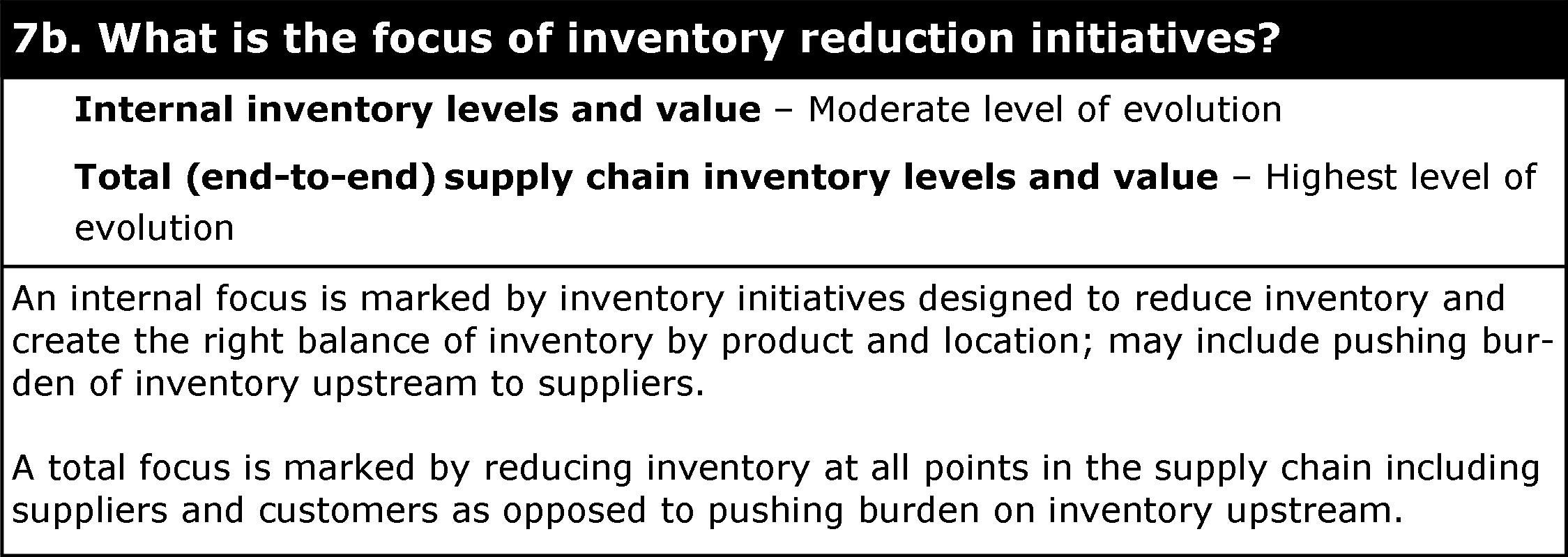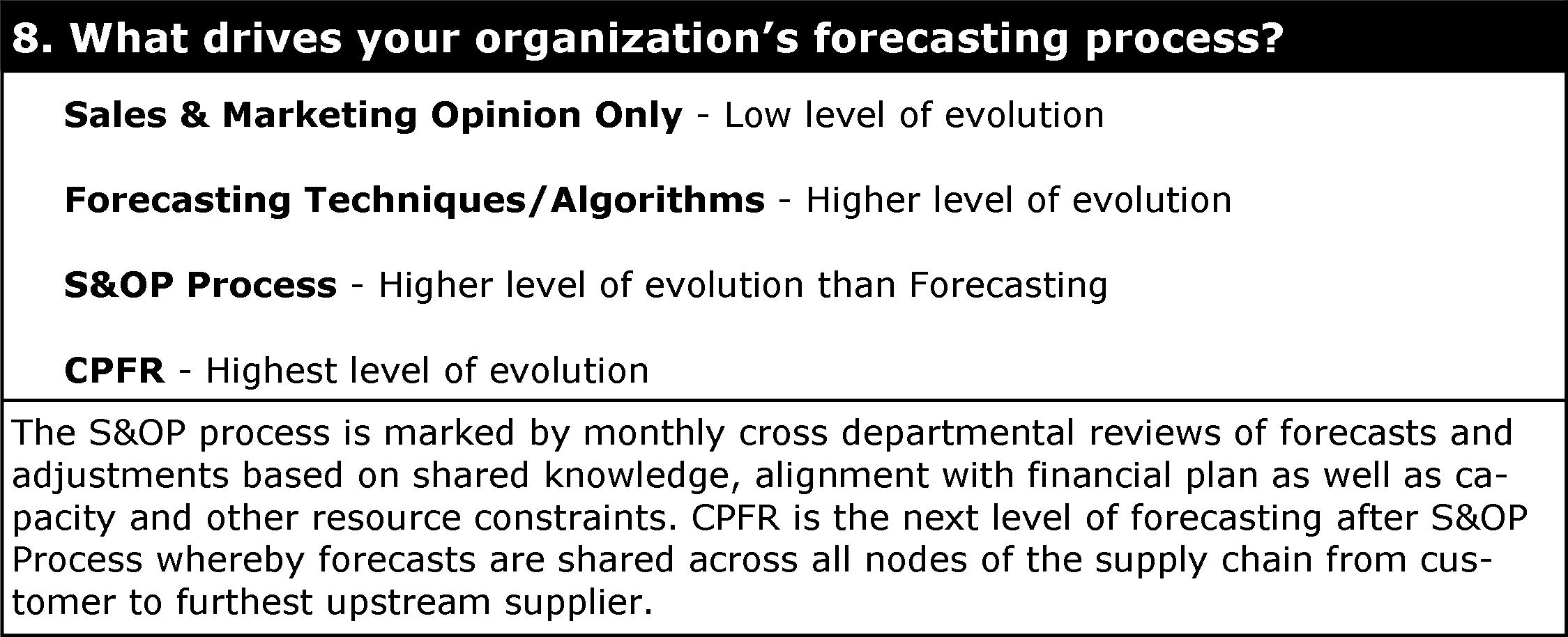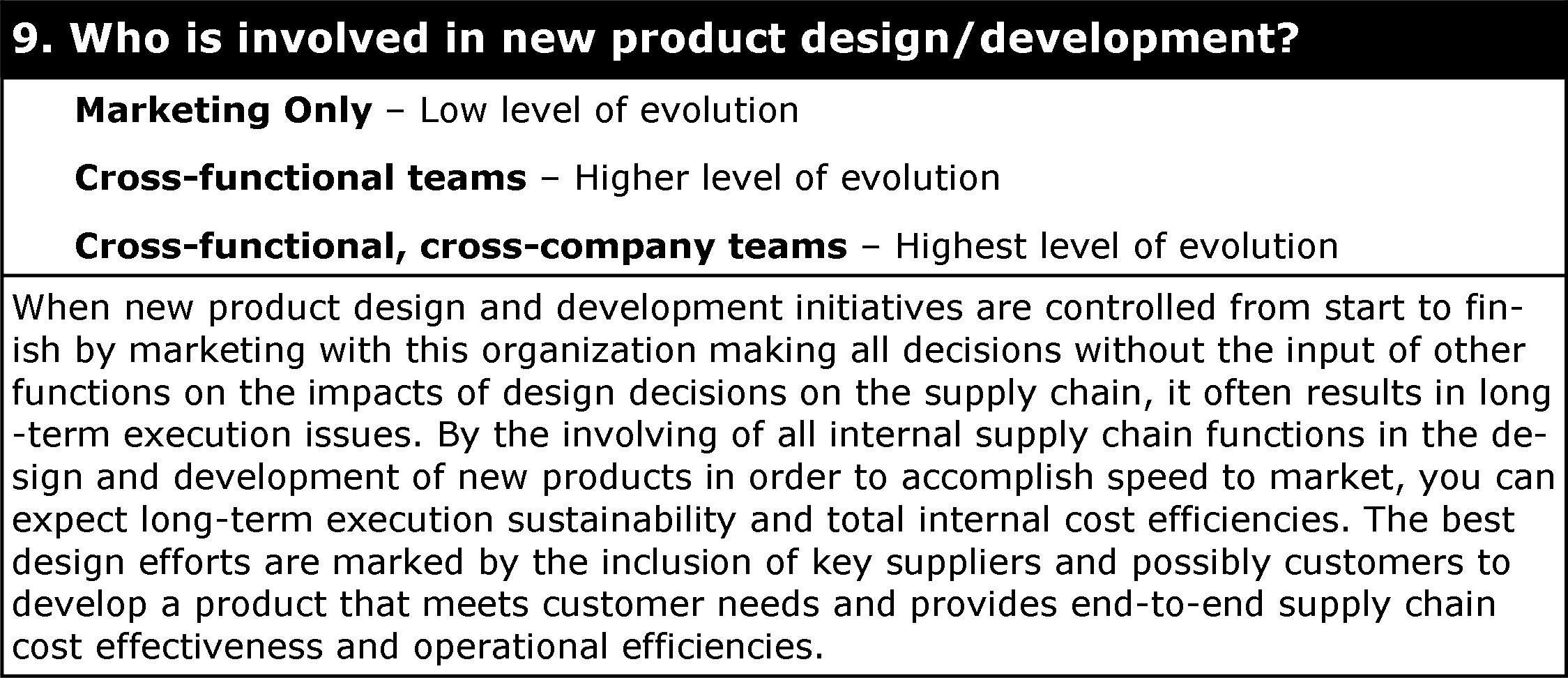
Part 3: How Evolved Is Your Supply Chain – Assessment Answers
Recently, I have been discussing supply chain evolution. My previous post provided a series of questions for you to assess where your organization is on the supply chain evolution continuum. Hopefully, you took a few minutes to think about the questions and answer them honestly. If not, take a few minutes to look at the assessment and answer the questions before reading on. Now that you have your answers, look below to find out how your organization is evolving.
As you can probably tell, determining your organization’s evolutionary progress and where you are on the continuum isn’t black and white, as your organization might be more advanced in some areas and less so in others; likewise, the supply chains for different brands or product lines might be at different stages of evolution.
APICS offers some additional structure by defining four stages of supply chain evolution on pages 1-18 and 1-19 of their Fundamentals of Supply Chain Management module as follows:
- Stage 1: Multiple Dysfunction. The (potential) nucleus firm [organization] lacks clear internal definitions and goals and has to external links other than transactional ones.
- Stage 2: Semi-Functional Enterprise. The nucleus firm [organization] undertakes initiatives to improve effectiveness, efficiency, and quality within functional areas. While some or all functions engage in initiatives designed to increase efficiency within their departmental walls, there is little or no overlap in decision-making from one department to another.
- Stage 3 – Integrated Enterprise. The firm [organization] break down silo walls and brings functional areas together in processes such as sales and operations planning (S&OP) with a focus on company-wide processes [and cost reductions] rather than individual functions.
- Stage 4 – Extended Enterprise. The firm [organization] integrates its internal network with the internal networks of selected supply chain partners to improve efficiency, product / service quality or both. The starting point is generally one inside / outside partnership that points the way to a completely networked enterprise.
Today, most organizations fall in the middle of the supply chain evolution continuum operating somewhere in or between Stage 2 and Stage 3. While many aspire to achieve Stage 4, few have successfully achieved this level of evolution and built sustainable partnerships with multiple members of their supply and customer base. Regardless of where your organization is on the continuum today, achieving higher levels of evolution in the future is possible. The future depends on…YOU. By ensuring that you think outside the box; integrate and collaborate with suppliers and customers (internal as well as external); and look to create win-win solutions throughout your daily activities, process execution, and interactions you can play an active role in your organization’s supply chain evolution.




